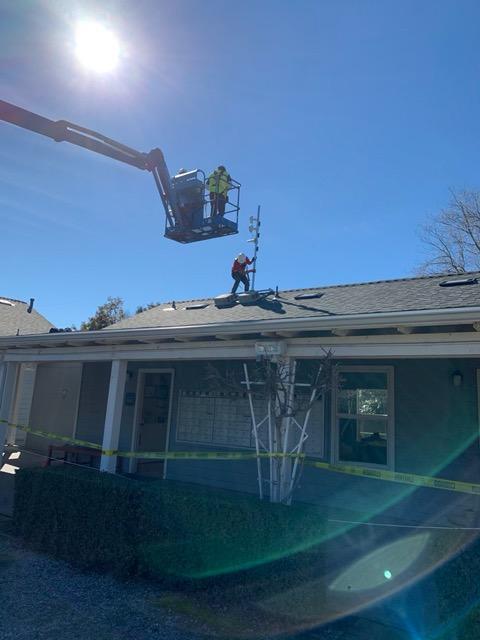Working for the city of San Jose in the late 1990s, Jon Walton got an early lesson in how digital investments can inadvertently lead to social inequities.
Wanting to leverage the city’s position as the unofficial capital of Silicon Valley, San Jose leaders moved to put permitting processes online. While the effort was intended to create a business-friendly environment, the city soon heard from residents who lacked the resources and political connections of large developers and who wanted to know why they couldn’t also conduct their own city business over the internet.

“For me, that was the genesis of realizing that there are real benefits to putting things online, but there’s also an unanticipated equity issue,” said Walton, who became chief information officer of San Mateo County in 2013, after stints in San Jose, San Francisco, and the private sector.
“The people who have the knowledge and the equipment and the access to the internet, they definitely have a leg up in terms of access. That stuck with me.”
The concepts of equity and access were again thrown into sharp relief for Walton last spring when the COVID pandemic pushed much of people’s daily lives online. San Mateo County had been investing in public Wi-Fi for years, but the service was mostly aimed at social spaces like parks, libraries and public squares. Now, the county needed to get as many people as possible connected within their own homes for critical activities ranging from online learning to remote work to telehealth.
“Before, we had this idea that people would come together in these public spaces to use the internet,” Walton says. “But now all these public spaces like libraries and community centers were all closed. Shelter-in-place changed the whole game.”
Expanding Options
Walton’s efforts around public Wi-Fi began in San Francisco, where he served as CIO from 2007 to 2013. At first, telco companies bristled at the idea of municipalities providing free connectivity to their citizens, viewing such programs as unwanted competition. But Walton said this attitude started to shift after the launch of the iPhone, which overloaded AT&T’s cellular network in San Francisco.
Rather than fighting the city, the company actually partnered with San Francisco on its public Wi-Fi project, and Walton said that telcos now largely see public connectivity as a way to help them deliver the content they produce.
“In the eight years we’ve been doing this in San Mateo County, I’ve never gotten a single letter or pushback from a telecommunications company saying, ‘We don’t want to see you do this,’” Walton said. “I really believe that the telcos have shifted their focus and revenue streams to be content providers, and connectivity is simply a means to an end.”
Prior to 2020, the county was already supporting more than 100 public Wi-Fi sites. When the pandemic hit, officials used school district data to pinpoint the geographical areas of greatest need for expanded connectivity. Using $6.3 million in federal CARES Act money, the county stood up 27 new public Wi-Fi locations, rolling out mobile access hubs and placing infrastructure on streetlights to beam signals directly into people’s homes.

The county also expanded access through the distribution of mobile hotspots and by helping residents to sign up for low-cost options like the Internet Essentials program from Comcast.
As a result, public Wi-Fi use has doubled over the past months since the new equipment was installed, and many students who previously could only complete schoolwork in parking lots are now able to connect from the comfort of their homes. Additionally families could more easily work from home or have telemedicine appointments from home.
This January and February alone, San Mateo County has seen nearly 200,000 unique users connect to the expanded public Wi-Fi network – representing around 25 percent of the county’s entire population.
From Project to Program
To improve public connectivity, San Mateo County officials have not only invested in infrastructure but also modified their mindset. Before 2020, Walton said, public Wi-Fi was seen as a “nice-to-have” amenity rather than an essential service.
“Now we’re treating it just like we treat the payroll system or the email system for the county,” he says. “We no longer call it a ‘project.’ We call it a ‘program.’”
To improve responsiveness, the county allocated two full-time staffers to manage the public Wi-Fi network, and also trained help desk staff to handle basic support questions. Walton said that the county’s hyperconverged infrastructure from Nutanix is also essential to ensuring reliability for the system.
“The fact that we have great partners like Nutanix, in addition to our network partners, means that the data center is always up, and I never have to worry about downtime or outages,” he said.
“That really reduces the amount of friction or anxiety I have about the service in the field. We have challenges in the field every day, with equipment that gets damaged or has to be replaced. But the one thing we rely on heavily is the fact that Nutanix is the core of our data center for compute, and it’s always up and always running.”
Walton said his department still has two to four years of work ahead of it to bring comprehensive connectivity to the county. And he predicts that public Wi-Fi will continue to be important, even as wireless carriers expand their 5G networks across the country.
“If you look at San Mateo County, two-thirds of it is very rural,” he notes. “On the coast where it is mountainous, you don’t even have cell phone signals out there. So there’s a geography challenge. And there’s a significant part of our population that makes less than $30,000 a year, so there’s an economic challenge, as well.”
Walton added: “I think this need is always going to be there.”
Calvin Hennick is a contributing writer. His work appears in BizTech, Engineering Inc., The Boston Globe Magazine and elsewhere. He is also the author of Once More to the Rodeo: A Memoir. Follow him on Twitter @CalvinHennick.
© 2021 Nutanix, Inc. All rights reserved. For additional legal information, please go here.






